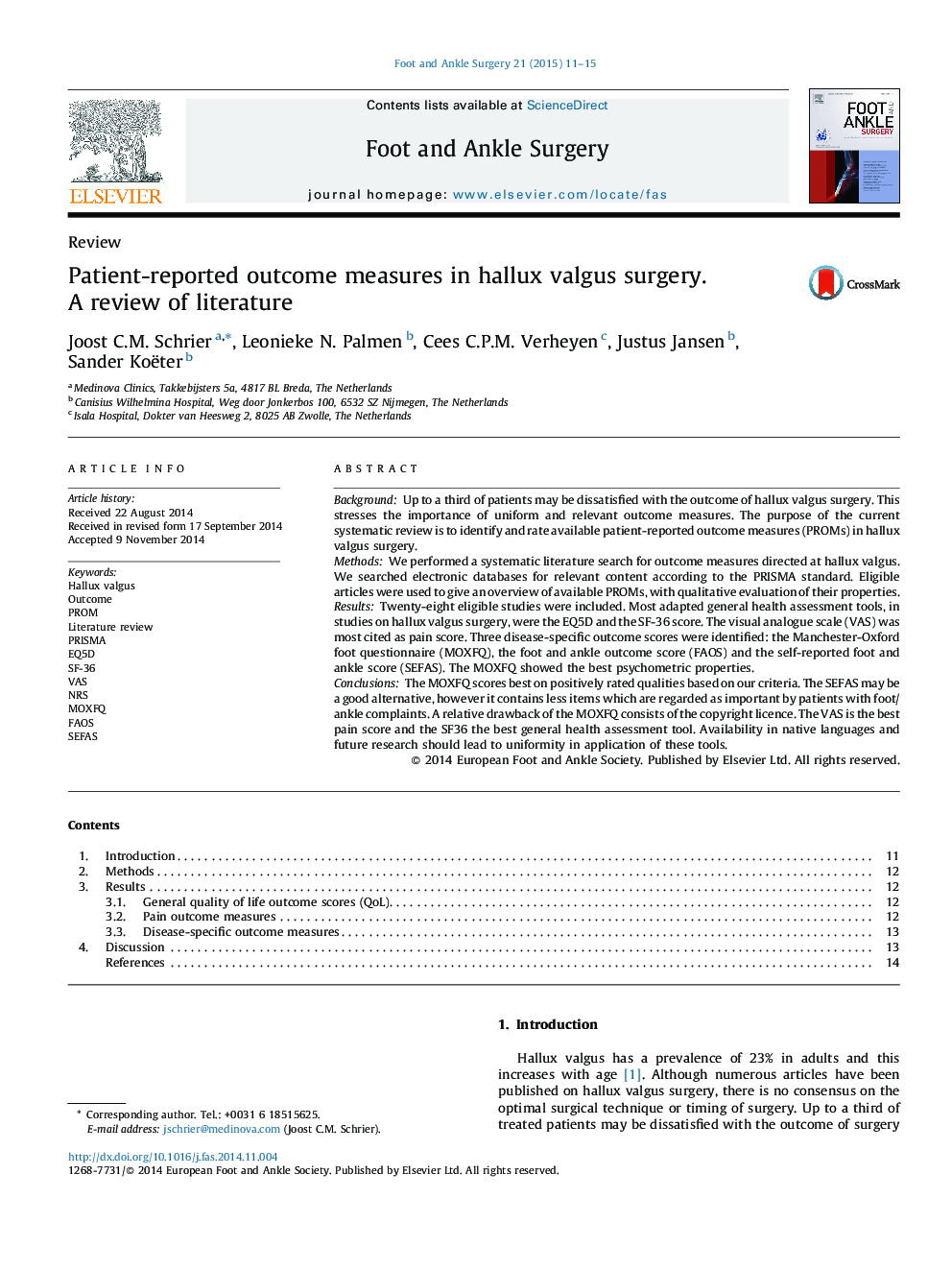| Article ID | Journal | Published Year | Pages | File Type |
|---|---|---|---|---|
| 4054565 | Foot and Ankle Surgery | 2015 | 5 Pages |
•There is no consensus on outcome measurement of hallux valgus treatment.•The VAS is the best pain score assessing outcome of hallux valgus treatment.•The SF36 is the best QoL outcome instrument assessing hallux valgus treatment.•The MOXFQ is the best disease-specific score assessing hallux valgus treatment.•The SEFAS could be a good alternative.•Future research must lead to general consensus on outcome measurement.
BackgroundUp to a third of patients may be dissatisfied with the outcome of hallux valgus surgery. This stresses the importance of uniform and relevant outcome measures. The purpose of the current systematic review is to identify and rate available patient-reported outcome measures (PROMs) in hallux valgus surgery.MethodsWe performed a systematic literature search for outcome measures directed at hallux valgus. We searched electronic databases for relevant content according to the PRISMA standard. Eligible articles were used to give an overview of available PROMs, with qualitative evaluation of their properties.ResultsTwenty-eight eligible studies were included. Most adapted general health assessment tools, in studies on hallux valgus surgery, were the EQ5D and the SF-36 score. The visual analogue scale (VAS) was most cited as pain score. Three disease-specific outcome scores were identified: the Manchester-Oxford foot questionnaire (MOXFQ), the foot and ankle outcome score (FAOS) and the self-reported foot and ankle score (SEFAS). The MOXFQ showed the best psychometric properties.ConclusionsThe MOXFQ scores best on positively rated qualities based on our criteria. The SEFAS may be a good alternative, however it contains less items which are regarded as important by patients with foot/ankle complaints. A relative drawback of the MOXFQ consists of the copyright licence. The VAS is the best pain score and the SF36 the best general health assessment tool. Availability in native languages and future research should lead to uniformity in application of these tools.
